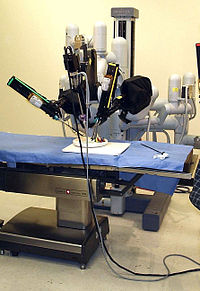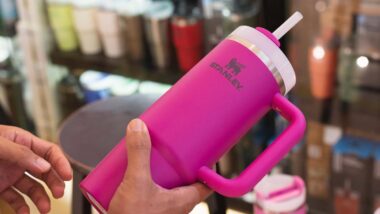Top Class Actions’s website and social media posts use affiliate links. If you make a purchase using such links, we may receive a commission, but it will not result in any additional charges to you. Please review our Affiliate Link Disclosure for more information.

Growing reports of da Vinci robotic surgery complications prompts FDA investigation. Image courtesy: Wikipedia.org
As technological advancements continue, patients are turning to surgical robots to perform a variety of procedures, including for hysterectomy surgery and prostatectomy (prostate surgery). These new advancements do not come without risks, however. One of the most popular surgical robots, the da Vinci Surgical System, has been making headlines for both its successes and the horrible consequences some patients have suffered due to complications and errors.
Patients who have been injured during da Vinci surgery have reported burns, punctured organs, blood vessels, excessive bleeding, and death. Due to the growing number of reports of da Vinci robotic surgery complications, the FDA has launched an investigation to determine whether or not the medical robot is responsible, and if so, what exactly causes the malfunctions that lead to serious injuries.
The da Vinci robot is manufactured by Intuitive Surgical Inc., and was originally released several years ago in the rise of medical technological advancement. Sales of the da Vinci robot have dropped between 2012 and 2013 due to the injury reports, and the company predicts it will likely drop further because of the FDA investigation. However, for its cheaper-priced systems, Intuitive still expects steady sales but will not know until later in the year when business and medical trends are established.
The business aspect of the da Vinci surgical robot is important to note because part of the FDA’s scrutiny stems over questions of whether or not this product is safe enough to produce. Over the past year, Intuitive has contended with growing controversy surrounding problems with da Vinci surgery injuries, which includes the FDA’s criticism and the rise of complication reports. Intuitive stated that the complications were due to the rise of surgical procedures performed by the da Vinci system, and that the products themselves are not actually malfunctioning.
A little into the investigation, the FDA released the results of a physician survey the agency had conducted, a primary suspicion of cause of these robotic surgery complications was that the physicians using them were not trained sufficiently. Eleven surgeons responded positively about the da Vinci Surgical System in the survey but stated that the technology was difficult to master, and that a lack of training may be negatively influencing the patient’s safety.
In a 10-K filing with the U.S. Securities and Exchange Commission in October 2013, Intuitive revealed that at least 50 da Vinci robot lawsuits had been filed around the country. Each of these da Vinci lawsuits alleged that the device in caused serious, sometimes fatal injuries to patients, and that they were directly caused by device failure, defect, and the lack of training the company gave to surgeons.
Overview of da Vinci Robot Surgery Complications
The da Vinci Surgical System has been primarily used in robotic hysterectomy and robotic prostatectomy surgeries across the country, and is continually being used to perform other robotic surgeries, including gastric bypasses, gall bladder removals, and thyroid cancer surgeries. However, the increased use of the medical robot has brought along higher numbers of complication reports. While the majority of da Vinci surgeries are successful, the system has been linked to serious complications in some patients, including death. The problems have led to a growing number of daVinci robot lawsuits.
Many medical and legal experts criticize Intuitive for selling and aggressively marketing a highly advance, technological product with little instruction, having possible design flaws, and failing to warn medical professionals and patients about the potential risks the robotic surgery carries.
Reported da Vinci robot surgery complications include but not limited to:
- Surgical burns to arteries or organs
- Sepsis
- Excessive bleeding
- Burns and/or tears to nearby organs including the intestines
- Punctured blood vessels, organs or arteries
- Severe bowel injuries
- Punctured or cut ureters
- Vaginal cuff dehiscence (reopening of the incision made to remove the uterus and cervix during a hysterectomy)
- Revision surgery to repair damage
- Wrongful death
File a da Vinci Robotic Surgery Lawsuit
If you or a loved one were injured following robotic surgery performed by the da Vinci Surgical System, you may qualify for compensation. Learn more and obtain a free case evaluation at the Da Vinci Robot Surgery Class Action Lawsuit Investigation. Fill out the short form to receive a free review of your potential da Vinci robotic surgery lawsuit. If you qualify, a robotic surgery lawyer will contact you about the next steps to take, at no cost to you.
ATTORNEY ADVERTISING
Top Class Actions is a Proud Member of the American Bar Association
LEGAL INFORMATION IS NOT LEGAL ADVICE
Top Class Actions Legal Statement
©2008 – 2024 Top Class Actions® LLC
Various Trademarks held by their respective owners
This website is not intended for viewing or usage by European Union citizens.














